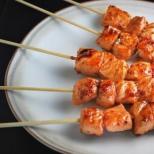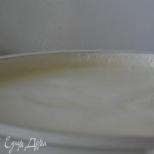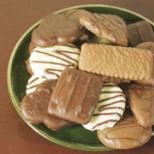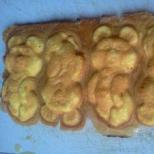Presentation on the topic "support-trophic tissues". Fundamentals of Cytology
To use the preview of presentations, create a Google account (account) and sign in: https://accounts.google.com
Slides captions:
Synthetic fabrics and their properties Topic 1
fibers Natural (plant, animal and mineral) Chemical (artificial and synthetic)
Repetition of the material science section
Synthetic fabrics Synthetic silk fabrics. They are produced from synthetic fibers obtained from high molecular weight compounds formed by synthesis from simple low molecular weight substances that are obtained from coal, oil and natural gas. Polyester (PESb) and polyamide (PAOB) silks can be treated in such a way that they are waterproof and resistant to oil stains. Recently, new qualities have been imparted to synthetic fibers - by mechanical or chemical treatment, for example, by compressed air, by twisting. Synthetic fabrics are made from such fibers - hosiery, fabric for outerwear. A fabric of this type is used for decoration, in products made from natural fabrics.
Synthetic fabrics Made from synthetic polymers (fibers)
Synthetic fiber
Synthetic fabrics Kapron Lavsan Nitron Viscose Acetate
Comparative characteristics of the properties of fabrics from natural and chemical fibers
International symbols for textile care
Clothes made of synthetic fabrics
Questions to reinforce What are synthetic fibers made from? What properties do the fibers of kapron, lavsan, nitron have? What fabrics are made from synthetic fibers?
check yourself
On the topic: methodological developments, presentations and notes
With the help of this presentation, you can work out in the lesson the definition of an isosceles triangle, the types of triangles, the proof of the theorem that in an isosceles triangle the angles at the base of the ...
-
slide 12
Mast cells, lymphocytes and endotheliocytes of loose connective tissue
-
slide 13
Plasma cell, mast cells, lymphocytes and adipocytes of loose connective tissue
Slide 14
A characteristic morphological feature of plasmocytes is the presence of a light courtyard in the cytoplasm and the specific location of heterochromatin along the periphery of the nucleus in the form of "spokes in a wheel"
slide 15
Intercellular substance. Morphology of collagen fibers
-
slide 16
Morphology of the elastic fiber
-
Slide 17
Synthesis of collagen
-
Slide 18
Amorphous component
predominantly produced by fibroblasts. It contains glycosaminoglycans: hyaluronic acid, chondroitin sulfates, dermatan sulfate, keratan sulfate, proteoglycans, glycoproteins, as well as proteins, carbohydrates, lipids and their complex compounds.
Slide 19
In dense fibrous connective tissue, fibers predominate over the amorphous component, and in dense, unformed, they are arranged randomly (G.-e .; Picrosirius-orcein; Polarizing microscopy)
Slide 20
In dense, formed connective tissue, the fibers are localized strictly parallel to each other. Tendon in longitudinal and transverse sections
slide 21
Connective tissues with special properties. Reticular tissue
-
slide 22
Adipose connective tissue
-
slide 23
Adipose tissue is white and brown
←In adipocytes of white tissue, the nucleus is pushed to the periphery, and the cytoplasm is completely filled with a drop of fat. ←In the brown tissue adipocyte, the nucleus is located in the center of the cell, and small drops of fat are located around the nucleus
slide 24
Skeletal connective tissues. Cartilage tissue: development
-
Slide 25
Hyaline cartilage of the trachea
-
slide 26
Elastic cartilage of the auricle (M. sw.)
-
Slide 27
Elastic cartilage of the auricle (B. sw.)
-
Slide 28
fibrocartilage
found in intervertebral discs, symphysis, in the seams between the bones of the skull.
slide 1
Plan 1. Morphological features of connective tissues. 2. Functions of connective tissues. 3. Histogenesis. 4. Classification of connective tissues. 5. Actually connective tissues. 5.1. Loose fibrous connective tissue. 5.2. Dense fibrous connective tissue. 5.3. Connective tissues with special properties. 6. Skeletal connective tissues. 6.1. cartilage tissues. 6.2. Bone tissues. Compiled by Professor N.P. Barsukov Simferopol 2008
slide 2
1. Morphological features of connective tissues
Connective tissues got their name not by chance, as they are involved in the connection of all other tissues in the composition of organs. They differ from other tissues in the presence, in addition to cells, of a large amount of intercellular substance represented by collagen, elastic and reticular fibers, as well as an amorphous component (basic substance). In the body, connective tissues account for more than half of the total body weight.
slide 3
2. Functions of connective tissues: protective, supporting, trophic, plastic and morphogenetic, participation in maintaining homeostasis and body temperature
3. Histogenesis. By origin, all types of connective tissues are related, since they all develop from the mesenchyme.
slide 4
Mesenchymocytes are the ancestors of all cells of various types of connective tissues.
slide 5
4. Classification of connective tissues
Connective tissues are divided into two large groups: connective tissues proper and skeletal connective tissues. The composition of the connective tissue itself includes fibrous connective tissues and connective tissues with special properties.
slide 6
The fibrous group includes: loose fibrous connective tissue, dense fibrous unformed and dense fibrous formed connective tissue.
Slide 7
In loose fibrous connective tissue, the amorphous component predominates over fibrous structures, which are always located in the form of a complex loop network.
Slide 8
Among the cells of loose connective tissue there are
Permanent: Family of fibroblasts. family of macrophages. Nonpermanent: mast cells, plasma cells, adventitial cells, pericytes, adipocytes, endotheliocytes, lymphocytes.
Slide 9
fibroblasts
the most numerous cells involved in the production of intercellular substance. According to the degree of maturity, they are: poorly differentiated and differentiated fibroblasts and definitive forms - fibrocytes, as well as myofibroblasts and fibroclasts.
Slide 10
Macrophages - descendants of monocytes - are divided into free (migrants) and fixed (sedentary, or resident). Main functions: secretion of biologically active substances (about 100), protective, antigen presenting, activation of differentiation of immunocompetent cells and stimulation of their functional activity, production of a chemotactic factor for leukocytes, secretion of an antitumor factor, fibroblast growth factor, etc.
slide 11
Macrophages of the liver and pancreas
Definition of connective tissue Connective tissues are a complex of mesenchymal derivatives, consisting of cellular differons and a large amount of intercellular substance (fibrous structures and amorphous substance), involved in maintaining the homeostasis of the internal environment and differing from other tissues in less need for aerobic oxidative processes.

Definition of connective tissue Connective tissue: - makes up more than half of the human body weight; - participates in the formation of the stroma of organs, layers between other tissues, the dermis of the skin, skeleton; - forms and anatomical formations - fascia and capsules, tendons and ligaments, cartilage and bones. The multifunctional nature of connective tissues is determined by the complexity of their composition and organization.







Loose fibrous connective tissue Loose fibrous connective tissue (textus connectivus collagenosus laxus) is found in all organs, accompanies the blood and lymph vessels and forms the stroma of many organs. The structure of loose fibrous connective tissue in various organs is similar. Consists of cells and intercellular substance.


Loose fibrous connective tissue The main cells of connective tissue are: - fibroblasts (family of fibril-forming cells), - macrophages, - mast cells, - adventitial cells, - plasma cells, - pericytes, - fat cells, - leukocytes migrating from the blood, - sometimes pigmented cells. Cellular composition

Loose fibrous connective tissue The macrophage system includes the totality of all cells that have the ability to capture foreign particles, dying cells, non-cellular structures, bacteria, etc. from the tissue fluid of the body. for the body, agents that occur locally or penetrate from the outside. The concept of the macrophage system

Loose fibrous connective tissue The macrophage system includes: - macrophages of loose fibrous connective tissue, - stellate cells of sinusoidal vessels of the liver, - free and fixed macrophages of hematopoietic organs, - macrophages of the lung, - peritoneal macrophages of inflammatory exudates, - osteoclasts of bone tissue, - giant cells of foreign bodies, - glial macrophages of the nervous tissue (microglia). The concept of the macrophage system

Loose fibrous connective tissue Mast cells (tissue basophils, mast cells). These terms are called cells, in the cytoplasm of which there is a specific granularity, resembling granules of basophilic leukocytes. Mast cells are regulators of local connective tissue homeostasis. They take part in lowering blood coagulation, increasing the permeability of the hematotissue barrier, in the process of inflammation, and immunogenesis. mast cells


Loose fibrous connective tissue Adipocytes (fat cells, lipocytes). This is the name of cells that have the ability to accumulate in large quantities reserve fat, which takes part in trophism, energy production and water metabolism. Adipocytes are located in groups, rarely singly and, as a rule, near blood vessels. Accumulating in large quantities, these cells form adipose tissue. Adipocytes


The form of singly located fat cells is spherical. A mature fat cell usually contains one large drop of neutral fat, which occupies the entire central part of the cell and is surrounded by a thin cytoplasmic rim, in the thickened part of which lies the nucleus. Adipocytes Loose fibrous connective tissue
 Loose fibrous connective tissue Pigment cells (pigmentocytes, melanocytes). These cells contain the pigment melanin in their cytoplasm. There are many of them in birthmarks, as well as in the connective tissue of people of black and yellow races. Pigmentocytes have short, irregularly shaped processes, a large number of melanosomes (melanin granules) with a size of 1525 nm and ribosomes. Part of the melanosomes from skin melanocytes migrates to other cells of the epidermis. pigment cells
Loose fibrous connective tissue Pigment cells (pigmentocytes, melanocytes). These cells contain the pigment melanin in their cytoplasm. There are many of them in birthmarks, as well as in the connective tissue of people of black and yellow races. Pigmentocytes have short, irregularly shaped processes, a large number of melanosomes (melanin granules) with a size of 1525 nm and ribosomes. Part of the melanosomes from skin melanocytes migrates to other cells of the epidermis. pigment cells
 Loose fibrous connective tissue The intercellular substance, or matrix (substantia intercellularis), of the connective tissue consists of collagen and elastic fibers, as well as of the main (amorphous) substance. The intercellular substance in both embryos and adults is formed, on the one hand, by secretion carried out by connective tissue cells, and on the other hand, from blood plasma entering the intercellular spaces. intercellular substance
Loose fibrous connective tissue The intercellular substance, or matrix (substantia intercellularis), of the connective tissue consists of collagen and elastic fibers, as well as of the main (amorphous) substance. The intercellular substance in both embryos and adults is formed, on the one hand, by secretion carried out by connective tissue cells, and on the other hand, from blood plasma entering the intercellular spaces. intercellular substance


Sources 1. Alexandrovskaya O.V., Radostina T.N., Kozlov N.A. Cytology, histology and embryology. Moscow: Agropromizdat, p. 2.Histology. Ed. Yu.I. Afanasiev. Moscow: Medicine, p. 3.Serov V.V. and Shekhter A.B. Connective tissue, M., 1981; 4. Khrushchov N.G. Histogenesis of connective tissue. M.: Nauka, Ham A., Cormac D. Histology. M.: Mir, T s. T s. 6. Shubnikova E.A. Functional morphology of tissues. Moscow: Moscow State University, p.

Classification of connective tissuesConnective
textile
Actually
connective
Skeletal
With special
properties
fibrous
cartilaginous
loose
Reticular
elastic
cartilage
dense
fatty
Hyaline
cartilage
unformed
Pigmentary
decorated
Mucous
Fibrous
cartilage
Bone
Rough
fibrous
lamellar
Connective tissue classification
Actuallyconnective
fabric (fig.25)
Skeletal
fabric (fig. 26 28)
Connective tissue proper
fibrousloose
fibrous
dense
fibrous
With special
properties
Reticular
fatty
Pigmentary
Fibrous loose connective tissue
Accompanies blood vesselsforms the stroma of many organs;
Functions: supporting, trophic, exchange
substances between blood and other
fabrics;
Has fewer fibers
but a wide variety
cells and the main amorphous substance;
Basic amorphous substance
is a colloidal solution
7
Dense fibrous connective tissue
1.2.
Contains a large amount of dense
located fibers;
Basic amorphous substance and cells
there is little in it;
There are 2 types:
Dense unformed fibrous tissue (forms
skin base). Contains collagen and elastic fibers
intertwined and go in different directions
densely shaped fibrous tissue (tendons,
ligaments, fascia, etc.). The fibers are tightly attached to each other.
friend and have a certain direction
Connective tissue functions:
Mechanical, support,shaping (bones, cartilage,
tendons)
Protective (bones, cartilage -
mechanical protection; chemical
protection - blood (immunity))
Trophic (fatty)
Plastic (regeneration and
wound healing)
A distinctive feature of connective tissue is
Well expressed intercellular substance,consisting of the main amorphous
substances and special fibers
Proper connective tissue with special properties
Characterized by the predominancehomogeneous cells
fatty
Pigmentary
Reticular
Mucous Adipose - an accumulation of fat cells
(omentum, subcutaneous fat layer, on
mesentery of the intestine, etc.)
Pigmentary - contains a lot of pigment
cells - melanocytes (birthmarks,
areas of skin in the area of the nipples, vascular
shell and iris)
Reticular - contains reticular
fibers and reticular cells with processes,
that form a network. (Bone marrow,
lymph nodes, spleen, kidneys, etc.).
Cells are able to transform into others
types of cells (macrophages, hematopoietic, etc.)
Skeletal tissue
1. CartilaginousHyaline
cartilage
elastic
cartilage
Fibrous
cartilage
2. Bone
cartilage tissue
Composed of cartilage cells (chondrocytes)located in groups of 2-3 cells,
ground substance and fibers
Types of cartilage tissue:
Hyaline cartilage (cartilage of joints, ribs,
trachea, bronchi). Contains collagen
fiber
Elastic cartilage (auditory tube, cartilage
auricle, epiglottis, etc.).
Contains collagen and elastic
fiber
Fibrous cartilage (intervertebral discs,
pubic symphysis, some joints).
Contains collagen fibers
bone cells
Osteoblasts are young cellsforming bone tissue.
Found in recovery areas
bone tissue and developing bones
Osteocytes are bone cells
formed from osteoblasts.
Lost the ability to divide.
Osteoclasts are large
multinucleated cells involved in
destruction of the bone.
14
Types of bone tissue
1. Coarse fiber (spongy)Bundles of ossein (collagen)
fibers are located in different
directions. Inherent in embryos
is preserved in the sutures of the skull and in places
tendon attachments to bones
2. Plate
Consists of bony plates
which ossein fibers
arranged in parallel bundles
inside the plates or between them.
Forms the bones of the skeleton.
bone
spongylamellar
Connective tissue classification
Connectivetextile
Actually
connective
Skeletal
With special
properties
fibrous
cartilaginous
loose
Reticular
elastic
cartilage
dense
fatty
Hyaline
cartilage
unformed
Pigmentary
decorated
Mucous
Fibrous
cartilage
Bone
Rough
fibrous
lamellar
nervous tissue
Carries out nervous regulationbodily functions and their relationship with
external environment
properties of nervous tissue
excitability and conduction
Ectodermal origin
The main cells are neurons and
accessory cells
neuroglia (intercellular substance)
The structure of a neuron
Axon is a long processneuron
Dendrite - a short process
neuron
Nerve fibers - processes
nerve cells covered
sheaths (myelin,
unmyelinated)
A nerve is a collection of nerve
fibers coated with a common
connective tissue
shell
19
Nerve fiber properties
Excitability - the ability to respondon the action of the stimulus by changing
physiological properties
Conductivity - ability
excite
Refractory - temporary
decrease in excitability
after arousal White matter is a collection of axons.
Performs a conductive function
Gray matter is a collection of bodies
neurons and dendrites. Performs
reflex function
Classification of neurons
By function:Afferent (sensory)
Insertion (intermediate)
Efferent (motor)
“Painting on fabric” - Stitching fabric (tritik). Knotted batik. Technologies. We start painting with lighter surfaces. The contours of the pattern and individual sections are covered with a hot reserve. SEWING THE FABRIC (tritik). Fabric preparation: Drawing preparation: Features of cold batik. Before work, the fabric must be washed (with laundry soap.
"Fabric appliqué" - Depicting a pattern or ornament. I wish you a happy journey in the world of patchwork colors! Fairy tales, stories ... And now a few recommendations! Safety precautions when working with scissors. Plot: I. Handle scissors very carefully. Applications are: Decorative: Carefully work with white and black flaps.
"Human tissues" - A living cell in a bone gap. Adipose tissue. Human skin. The intercellular substance of the bone. Large bony canal with blood vessels and nerves. Work order: Table. Human blood. The epithelium of the mammary gland. The epithelium of the mammary gland includes cubic-shaped cells that secrete milk. The cells of the lowest layer (left) are dividing, renewing the tissue.
"Tissue biology" - Lesson objectives. Lesson on the topic: "Tissues" biology Grade 8. The cells are small, closely adjacent to each other, there is little intercellular substance. Cells are large and loosely arranged. List the types of connective tissue. Muscle. Functions of nervous tissue. epithelial tissue. There is an intercellular substance. Neuroglia.
"Types of fabrics" - Finishing materials. The color of the skin can be natural and dyed. Gasket materials: interlining, synthetic winterizer, dublerin, bortovka. Interlining materials serve to stiffen the parts of a garment. Assortment of lining materials. Lace, bias trim, piping, soutache. Non-woven, insulating, cushioning and finishing materials.
"Properties of fabrics" - What affects the strength and crease of the fabric? The property of fabric to crumble when cutting. Physical and mechanical properties of tissues. The property of fabric to wrinkle. Technological properties of fabrics. What are the hygienic properties? Hygienic properties of fabrics. The property of fabric to retain heat. The process of creating clothes is very complex and multifaceted.





